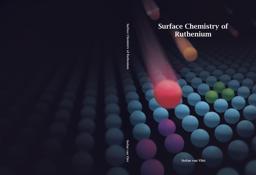2025-04-30
Surface chemistry of ruthenium
Publication
Publication
This thesis deals with challenges in the field of materials, or more precisely with the stability of materials under harsh conditions. As metals are essential parts of our modern-day lives, they are exposed to widely different, ranging from vacuum to corrosive conditions. In these corrosive conditions, metals oxidize and their lifetime is decreased. Ruthenium has been studied for its resistance against oxidation. The oxidation of ruthenium has been studied for decades, however, the oxidation mechanisms are still not well understood. By designing careful experiments and by probing the surface composition, one can study reactions with the surface. In this thesis, the surface chemistry of ruthenium is investigated with a focus on the interaction with oxygen, water, and silicon. In situ studies and detailed analysis of the spectral features in X-ray photoelectron spectroscopy provide new insights into the formation of compounds with silicon and on the intricacies of oxide growth at ruthenium surfaces. During iterative near-ambient pressure X-ray photoelectron spectroscopy measurements, pristine single-crystal ruthenium surfaces were exposed to oxygen at elevated temperature, revealing a two-step oxidation mechanism. These results indicate that ruthenium first forms a thin intermediate oxide phase, followed by the growth and formation of the stable ruthenium dioxide phase. The fundamental insights on the evolution of ruthenium surfaces close to realistic conditions reported in this thesis can lead to improvements of their performance and lifetime in industrial applications.
| Additional Metadata | |
|---|---|
| P.C.M. Planken (Paul) , R. Bliem (Roland) | |
| ASML, ARCNL, VU, UvA, RUG, NWO | |
| University of Amsterdam, UvA | |
| Organisation | Materials & Surface Science for EUV Lithography |
|
van Vliet, S. (2025, April 30). Surface chemistry of ruthenium. |
|

